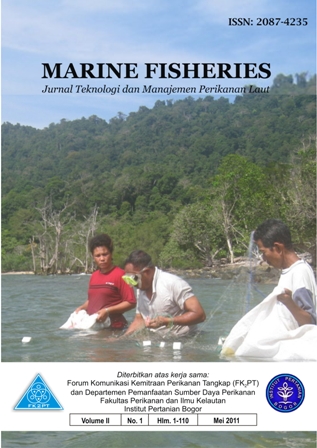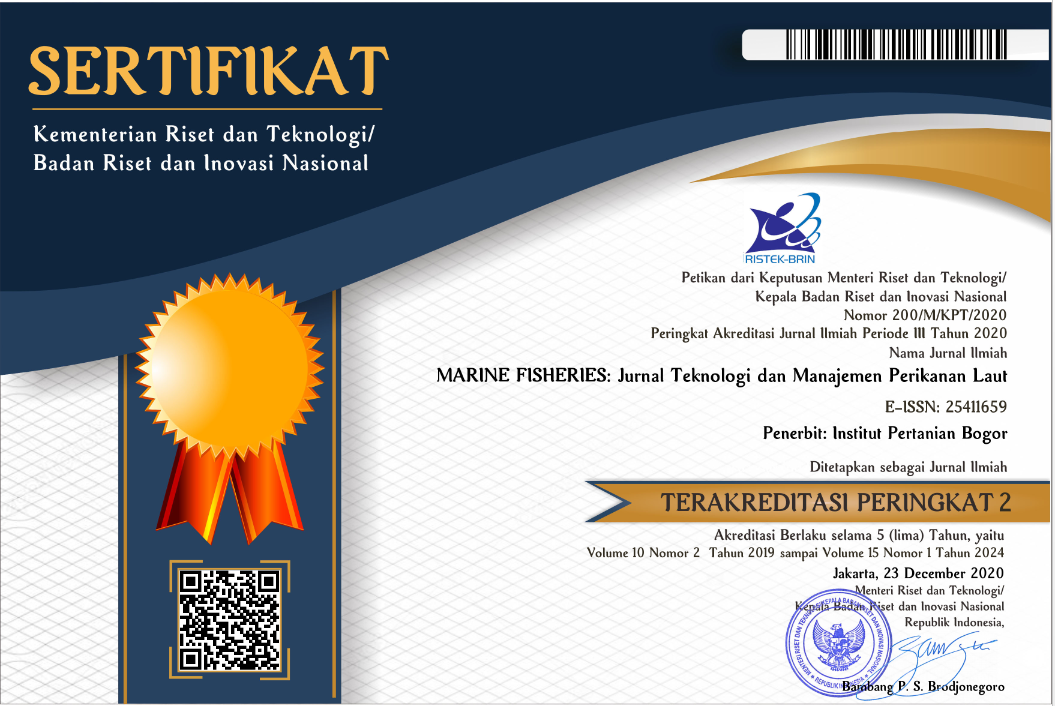EFEKTIVITAS PEMANFAATAN RUMPON PADA OPERASI PENANGKAPAN IKAN DI PERAIRAN KEI KECIL, MALUKU TENGGARA
Abstract
One of ways to increase the fishing operation effectiveness is done by using fish aggregating device (FAD) called rumpon. The types of FAD used in Kei Kecil waters made from bamboos or plastic drum material. This research objectives are (1) determining catch composition around FAD, (2) comparing the effectiveness of two types of FAD on fishing operation, and (3) comparing the effectiveness of fishing gears, operated around the FAD. The method that used in this research was doing survey through observing fishing activities around the FAD. Fishing gear and FAD samples were determined through purposive sampling method. These data were collected from August to October 2007 in Kei Kecil Waters of South East Maluku. The kind of fish catch around FAD were scad mackerel, frigate mackerel, and barred spanish mackerel. The most dominant of catch was scad mackerel (80%), whereas percentage e of frigate mackerel and barred spanish mackerel were 19% and 1%. The composition of the length size of scad mackerel, frigate mackerel, and barred spanish mackerel were dominated by the large size. Type of bamboo FAD was more efective compared with the plastic drum FAD type. Purse seine fishing was more efective compared with gillnet and troll line fishing that operated around rumpon.Downloads
Published
2012-02-16
How to Cite
SimbolonD., JeujananB., & WiyonoE. S. (2012). EFEKTIVITAS PEMANFAATAN RUMPON PADA OPERASI PENANGKAPAN IKAN DI PERAIRAN KEI KECIL, MALUKU TENGGARA. Marine Fisheries : Journal of Marine Fisheries Technology and Management, 2(1), 19-28. https://doi.org/10.29244/jmf.2.1.19-28
Section
Articles
Author(s) who published in this journal agree to following terms:
- Author(s) must understand and agree that the copyright script in published owned by the Marine Fisheries Journal. The copyright includes reproducing and selling the manuscript to all parties.
- Everyone can cite every manuscript published in Marine Fisheries for educational purposes, with the author's name and the Marine Fisheries Journal on reference.









